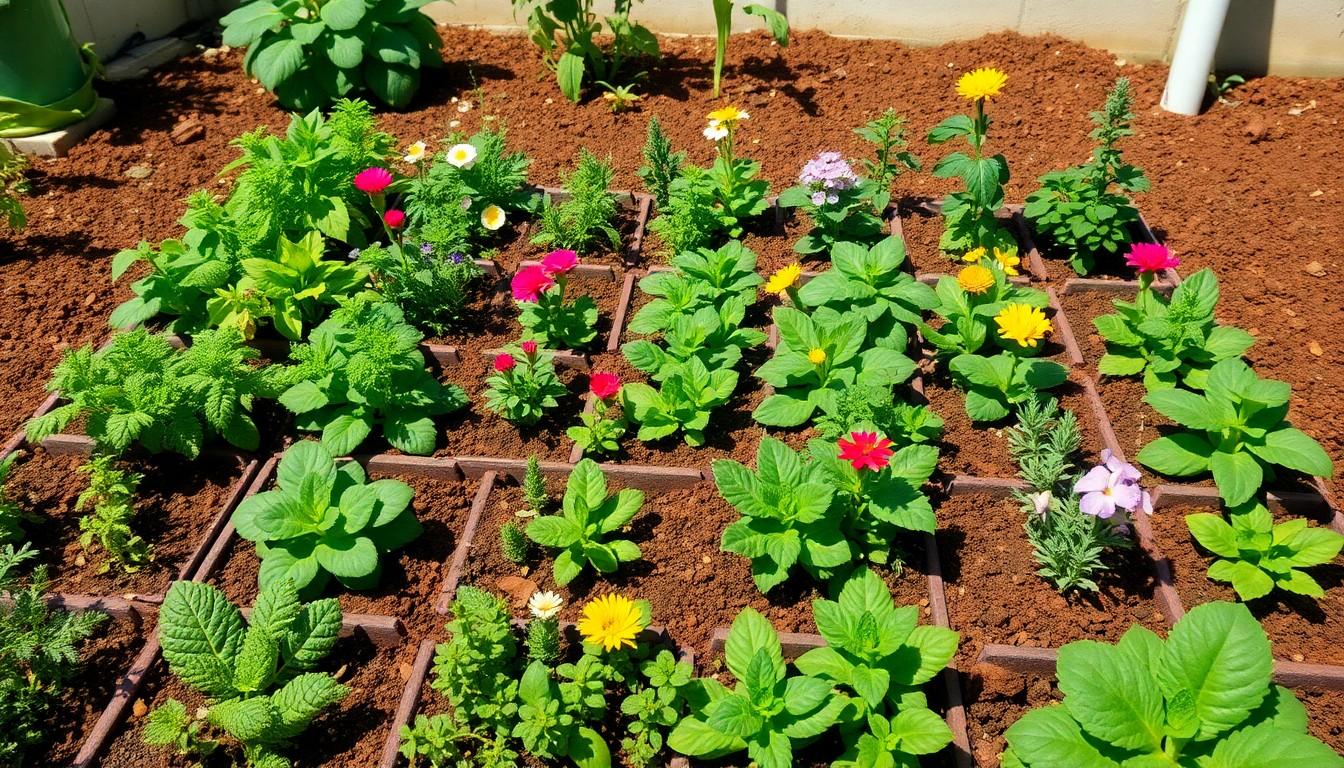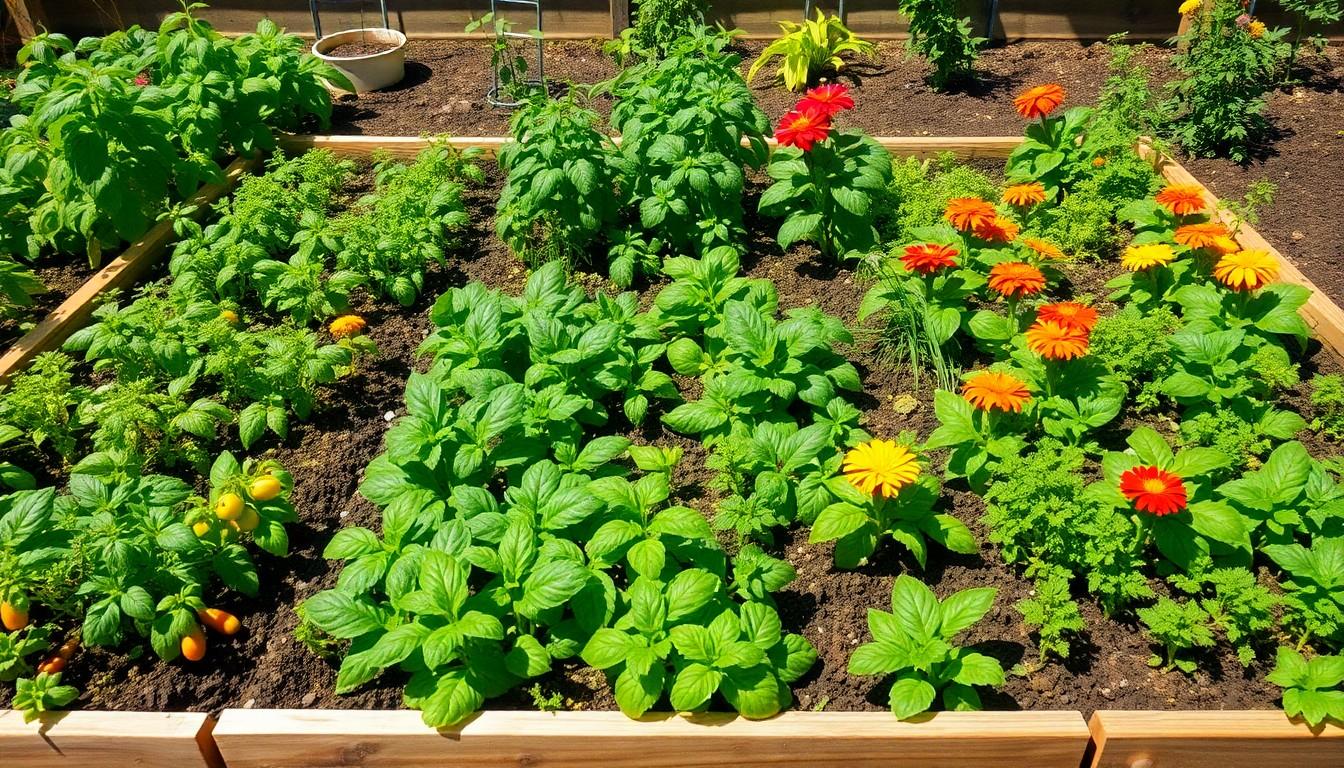Imagine a garden where plants not only thrive but also become the best of friends. That’s the magic of companion planting! This clever technique pairs plants that support each other’s growth, creating a harmonious ecosystem right in your backyard. And when you throw square foot gardening into the mix, you’ve got a recipe for a bountiful harvest that’ll make your neighbors green with envy.
But how do you know which plants to pair? Enter the companion planting square foot gardening chart—a gardener’s secret weapon. With this handy guide, you’ll learn which plants love each other and which ones would rather not share a plot. Get ready to transform your gardening game and enjoy a flourishing garden that’s as entertaining as it is productive. After all, who knew that planting could be a social affair?
Overview Of Companion Planting
Companion planting involves pairing plants to promote healthy growth and support a balanced ecosystem in the garden. This technique increases productivity and enhances pest management.
Benefits Of Companion Planting
Companion planting offers multiple advantages. It boosts plant growth through mutual support, allowing some plants to provide nutrients or shade. Pest deterrence occurs as certain plants repel harmful insects, reducing the need for chemical treatments. Some combinations attract beneficial insects that aid in pollination and pest control. Improved soil health results from diverse root structures that enhance nutrient availability. This method encourages efficient use of space, making it ideal for square foot gardening.
Key Principles Of Companion Planting
Key principles guide successful companion planting. Understanding plant compatibility is essential; certain plants thrive when grown together, while others may compete for resources or inhibit each other’s growth. Diverse root systems enhance nutrient uptake and improve soil aeration. Incorporating native plants attracts beneficial insects and supports local ecosystems. Timing also matters; planting certain crops together can lead to crop rotation benefits. Finally, rotating plants each season prevents soil depletion and minimizes pest issues.
Understanding Square Foot Gardening

Square foot gardening optimizes space, allowing gardeners to cultivate a variety of plants in a small area. This method emphasizes organization and efficiency in growing vegetables and herbs.
What Is Square Foot Gardening?
Square foot gardening divides planting areas into square sections, typically measuring one foot by one foot. Each square contains specific plants based on their growth habits and space requirements. This structured approach enables gardeners to maximize yield while minimizing wasted space. Beginning gardeners and seasoned enthusiasts alike can benefit from this easy-to-manage system.
Advantages Of Square Foot Gardening
Square foot gardening offers several advantages for gardeners. It simplifies planting and maintenance, reducing the need for extensive weeding or pest control. By promoting biodiversity, it enhances soil health and improves nutrient availability. Space efficiency leads to higher productivity, allowing gardeners to grow more in less area. This method also accommodates crop rotation easily, fostering a healthier garden ecosystem. Additionally, square foot gardening makes it accessible for urban gardeners seeking to utilize small spaces effectively.
Companion Planting Square Foot Gardening Chart
A companion planting square foot gardening chart serves as a vital tool for gardeners. This chart illustrates ideal plant pairings, enhancing growth and health in a limited space.
How To Create Your Own Chart
Creating a personal companion planting chart requires careful planning. Start by identifying plants preferred in your climate and soil type. Next, research compatible and incompatible plant combinations. Utilize a square foot grid to map each section. Assign particular plants to designated squares based on their growth requirements. Update the chart yearly as you gain experience and discover new pairings. This customizable approach ensures a unique gardening strategy tailored to specific needs, maximizing productivity.
Popular Companion Planting Pairings
Several popular pairings exist that demonstrate the effectiveness of companion planting. Basil thrives alongside tomatoes, enhancing flavor and repelling pests. Carrots and onions complement each other’s growth while deterring destructive insects. Beans provide nitrogen to corn, improving soil health and promoting taller, stronger stalks. Marigolds naturally repel harmful nematodes, making them ideal companions for many vegetables. Additionally, planting squash with corn utilizes vertical space efficiently. Recognizing these pairings helps create a diverse, healthy garden ecosystem.
Tips For Successful Companion Planting
Effective companion planting involves thoughtful selection of plants. A well-considered approach fosters growth, maximizes yield, and minimizes pests.
Recommended Plants For Beginners
Starting with companion planting can be simple. Basil pairs well with tomatoes, enhancing flavor and deterring pests. Marigolds attract beneficial insects and discourage harmful ones, making them excellent companions for various vegetables. Radishes thrive alongside squash, as radish roots break up soil compactness. Lettuce grows quickly with taller plants like peas, creating a layered green space. Carrots and onions coexist nicely, with carrots deterring onion flies. These easy-to-grow plant combinations support newcomers on their gardening journey.
Common Mistakes To Avoid
Many gardeners overlook spacing when planting. Overcrowding leads to competition for nutrients and water, which can stunt growth. Ignoring plant compatibility is another common error. Pairing plants that don’t get along hinders productivity and health. Using the same crop year after year risks soil depletion. Rotating crops prevents this issue, promoting balance. Neglecting to observe plant growth and health can also result in problems. Regular monitoring helps identify and address potential pest problems early on, ensuring a thriving garden.
Conclusion
Embracing companion planting within the framework of square foot gardening can transform any garden into a lush and productive space. By understanding plant compatibility and utilizing a companion planting chart, gardeners can maximize their yields and create a balanced ecosystem. This method not only enhances growth but also simplifies maintenance and pest management.
As they explore various plant pairings, gardeners will discover the joy of cultivating diverse crops that thrive together. With thoughtful planning and attention to detail, anyone can enjoy the benefits of companion planting and square foot gardening, leading to a more fruitful and rewarding gardening experience.

